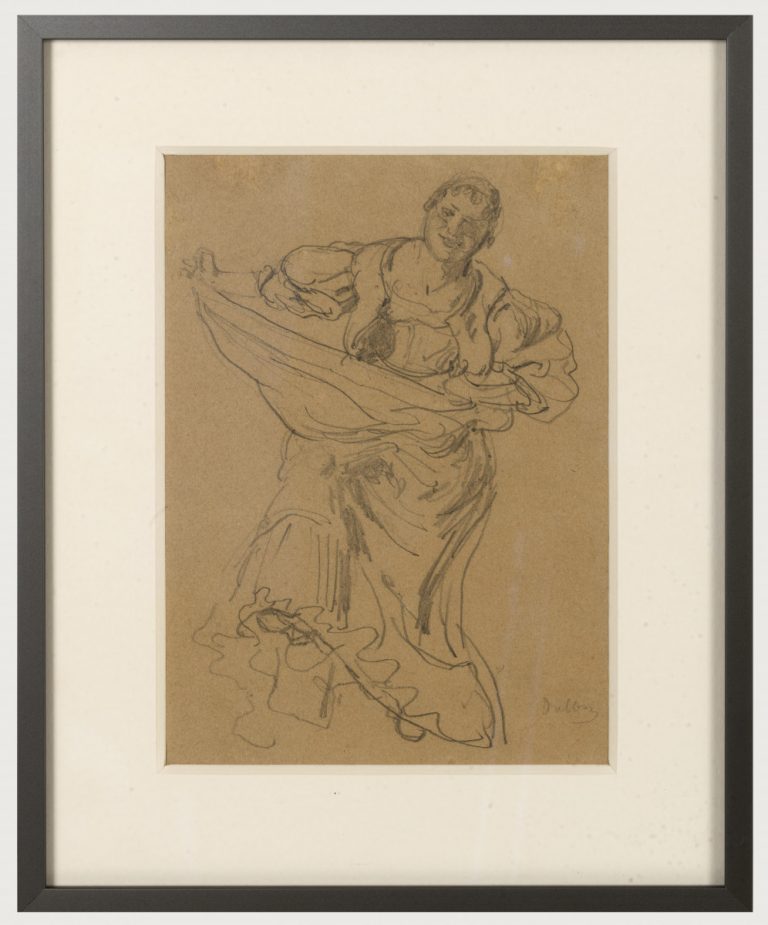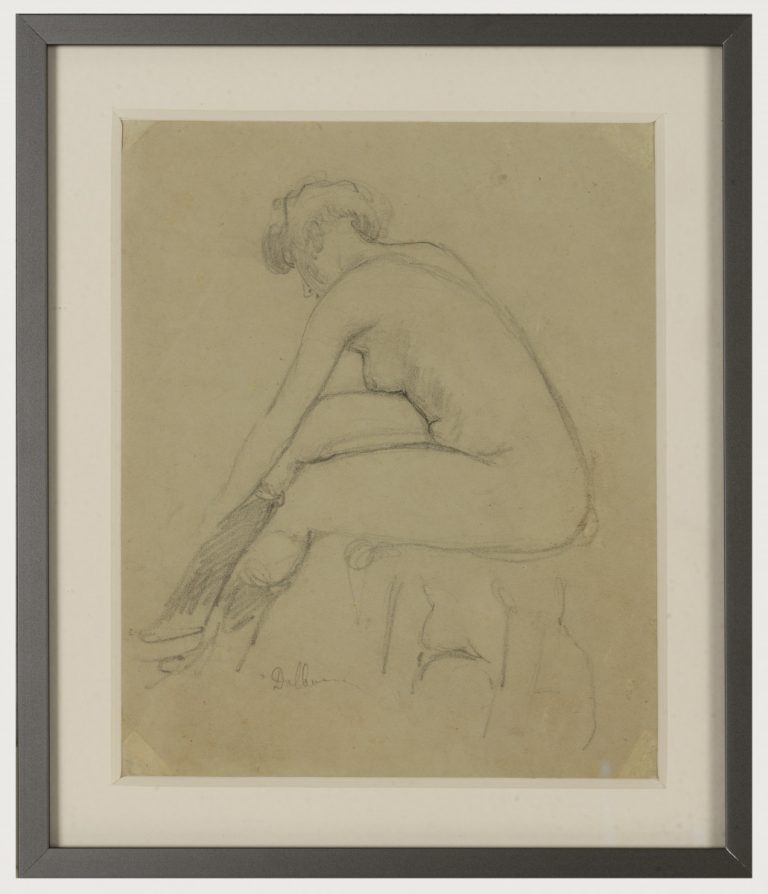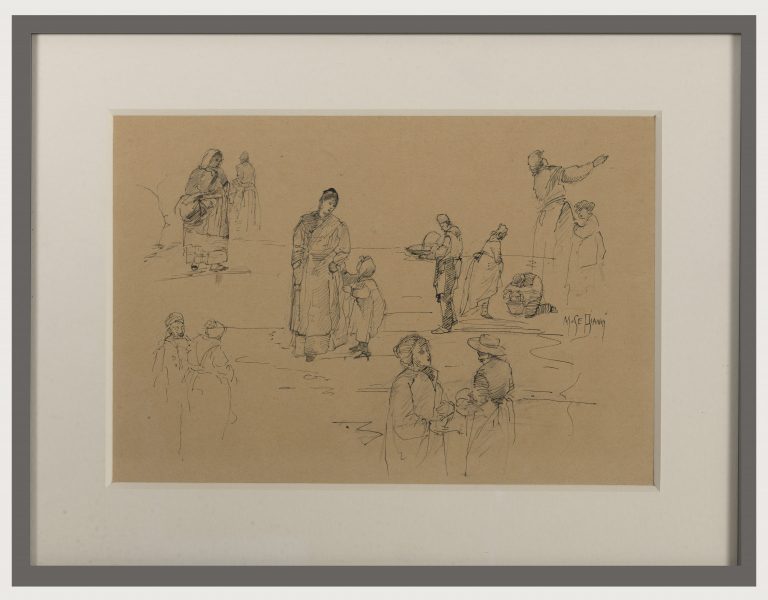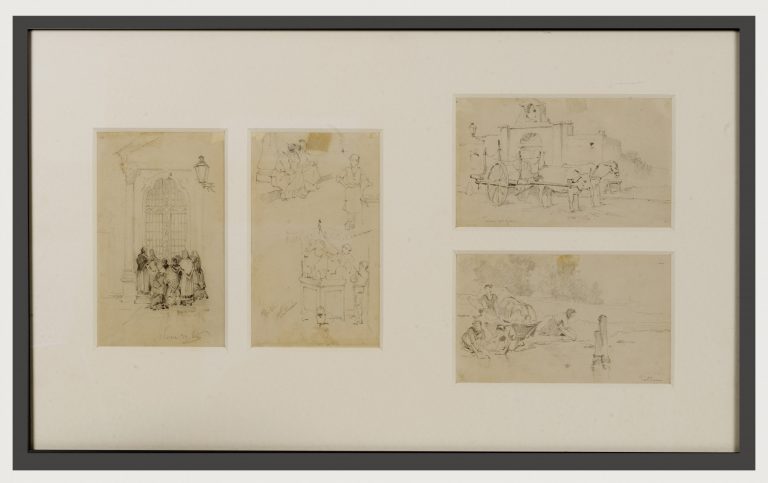
The second half of the Nineteenth Century in Abruzzo
The new section, dedicated to the second Nineteenth and early Twentieth century in Abruzzo, ideally concludes the museum tour with a few but significant works by some of the masters of Italian Verism.
Established only recently, the section is gradually being enlarged thanks to a targeted acquisition campaign aimed at highlighting the leading role that Abruzzo played in the panorama of Italian art at the turn of the century, with a special focus on the different declinations that veristic language had in this region.
While some works were already exhibited in 1968 on the first inauguration of the Modern Art section at the L’Aquila Castle, such as Vittorino Scarselli’s Portrait of Teofilo Patini, others are the result of subsequent acquisitions, including Francesco Paolo Michetti’s The morticelli, which entered the collection in 2004, or very recent ones. The latter include The Redemption by Teofilo Patini, the two sculptures Costume of Scanno and Alone by Costantino Barbella and View of lake Fucino by Aurelio Tiratelli, purchased by the National Museum of Abruzzo in 2022.
The new room focuses on an authentic masterpiece, The morticelli by Francesco Paolo Michetti.
The large canvas, an admirable example of the artist’s early production, depicts the funeral of two little twins that, as in a film sequence, unfolds calmly and serenely along the coast of Francavilla a Mare. It was here, a few years earlier, that Michetti had moved, laying the foundations for the artistic-literary association known as the “Conventino” – in memory of the Franciscan convent of Santa Maria del Gesù purchased by the artist in 1885 and transformed into his own studio and home – to which his closest friends belonged, including the poet Gabriele D’Annunzio, the musician Francesco Paolo Tosti and the sculptor Costantino Barbella.
It is precisely to Costantino Barbella that a small space is dedicated with three sculptures – Costume of Scanno, Su su and Alone – that fully convey the sense of his plastic production permeated by a playful spirit rendered naturalistically with idyllic-pastoral scenes.
Placed in contrast of The morticelli is another important work, The Redemption by Teofilo Patini. A native of Castel di Sangro and educated in Naples in contact with Domenico Morelli and above all Filippo and Nicola Palizzi, from whom he learnt the fundamental lesson of verism, Patini soon afterwards settled in L’Aquila where he became director and teacher in the School of Arts and Crafts, opening his studio in Palazzo Ardinghelli, now home to the National Museum of 21st-Century Arts (MAXXI).
Famous especially for his canvases with a strong social content – suffice it to mention The heir, Spade and milk e Beasts of burden – in his last production Patini focused on religious themes with symbolic-Masonic content, of which The Redemption is one of the most significant examples.
In front of this work stands the austere Portrait of Teofilo Patini painted by his pupil Vittorino Scarselli, who immediately after the Master’s death wished to pay homage to him with this canvas.
The exhibition concludes with Pasquale Celommi’s The laundress – which portrays a young woman posing in front of a camera while smilingly looking at the viewer – Aurelio Tiratelli’s View of lake Fucino, a large and rare view of lake Fucino shortly before it was drained, and a careful selection of drawings by Teofilo Patini, Basilio Cascella, Mosè Bianchi, Edoardo Dalbono, Francesco Paolo Michetti and Vincenzo Migliaro.
N. 4 drawings on notebook sheets
Teofilo Patini (Castel di Sangro 1840 – Naples 1906)
Pencil on paper




